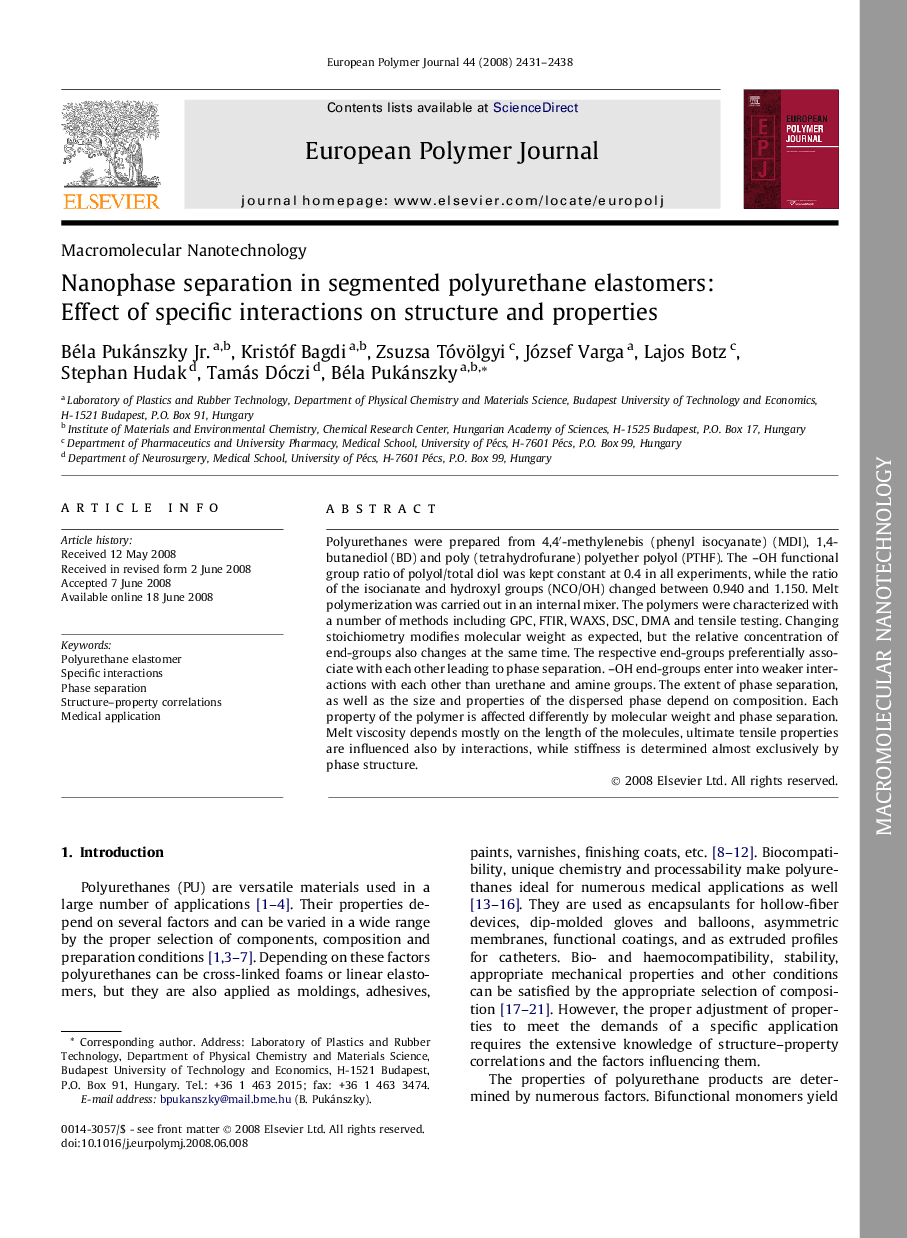| Article ID | Journal | Published Year | Pages | File Type |
|---|---|---|---|---|
| 1403004 | European Polymer Journal | 2008 | 8 Pages |
Polyurethanes were prepared from 4,4′-methylenebis (phenyl isocyanate) (MDI), 1,4-butanediol (BD) and poly (tetrahydrofurane) polyether polyol (PTHF). The –OH functional group ratio of polyol/total diol was kept constant at 0.4 in all experiments, while the ratio of the isocianate and hydroxyl groups (NCO/OH) changed between 0.940 and 1.150. Melt polymerization was carried out in an internal mixer. The polymers were characterized with a number of methods including GPC, FTIR, WAXS, DSC, DMA and tensile testing. Changing stoichiometry modifies molecular weight as expected, but the relative concentration of end-groups also changes at the same time. The respective end-groups preferentially associate with each other leading to phase separation. –OH end-groups enter into weaker interactions with each other than urethane and amine groups. The extent of phase separation, as well as the size and properties of the dispersed phase depend on composition. Each property of the polymer is affected differently by molecular weight and phase separation. Melt viscosity depends mostly on the length of the molecules, ultimate tensile properties are influenced also by interactions, while stiffness is determined almost exclusively by phase structure.
